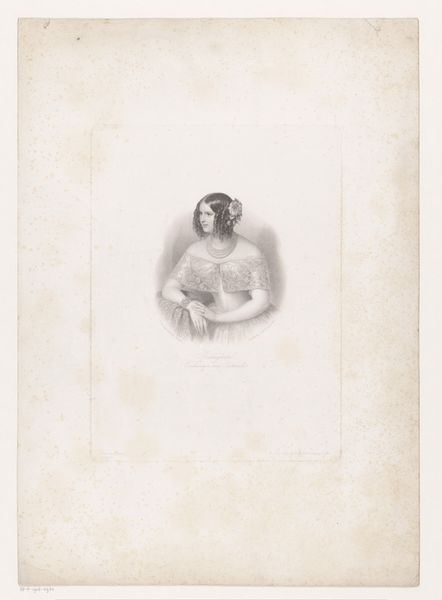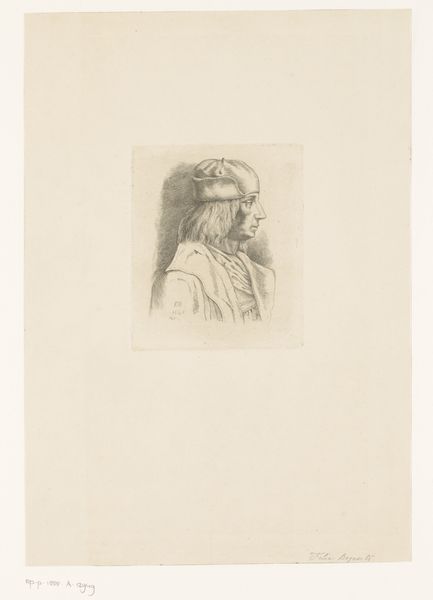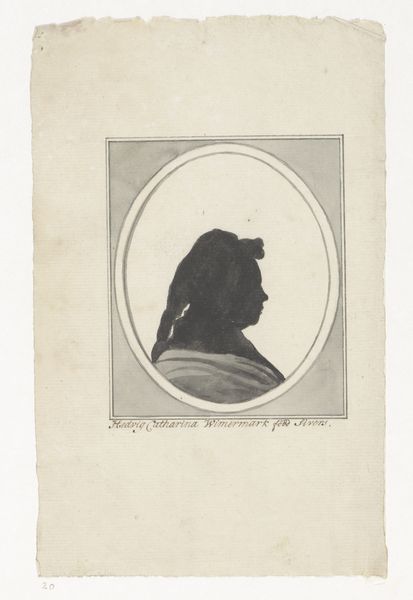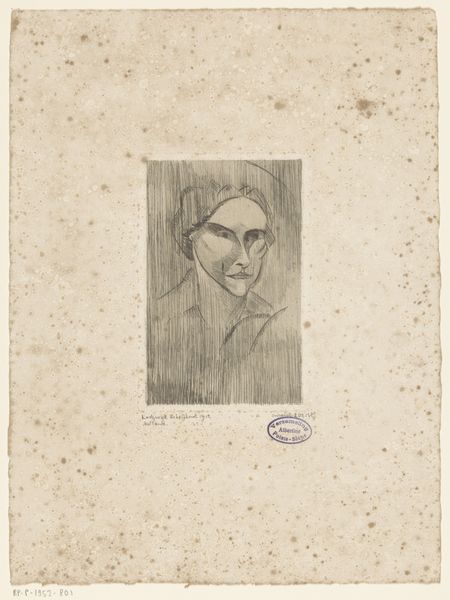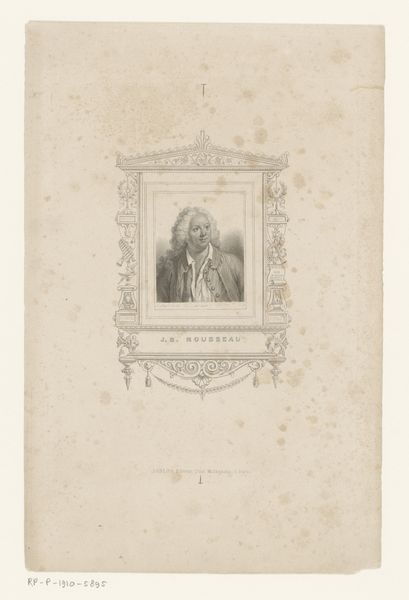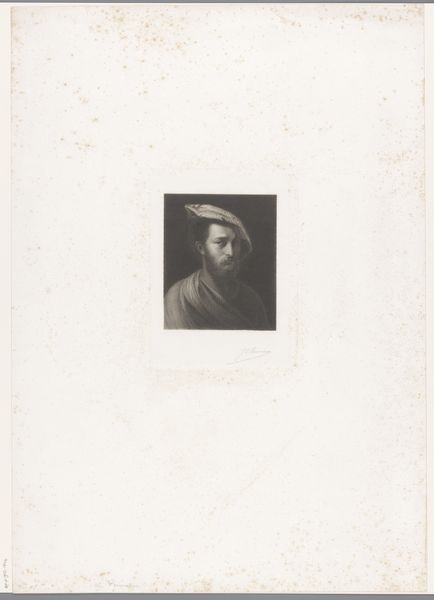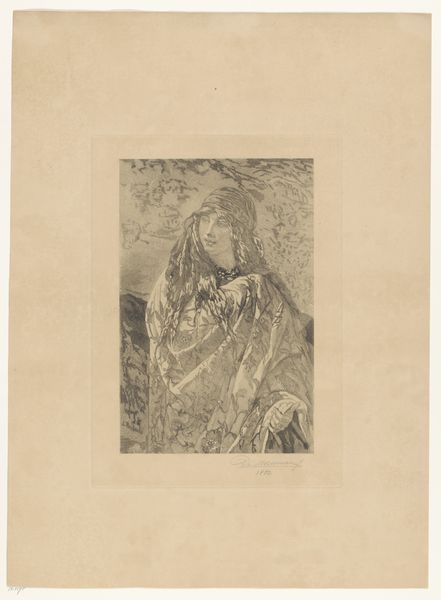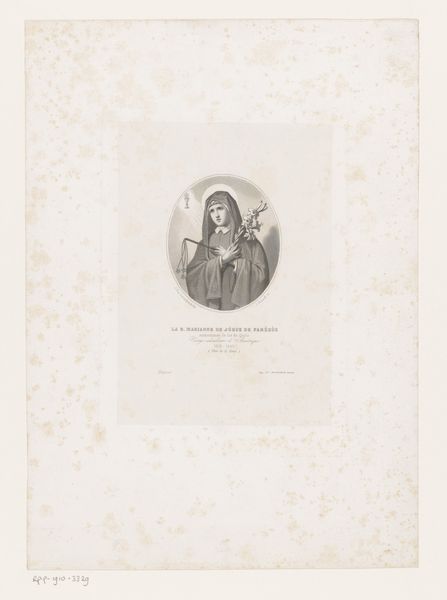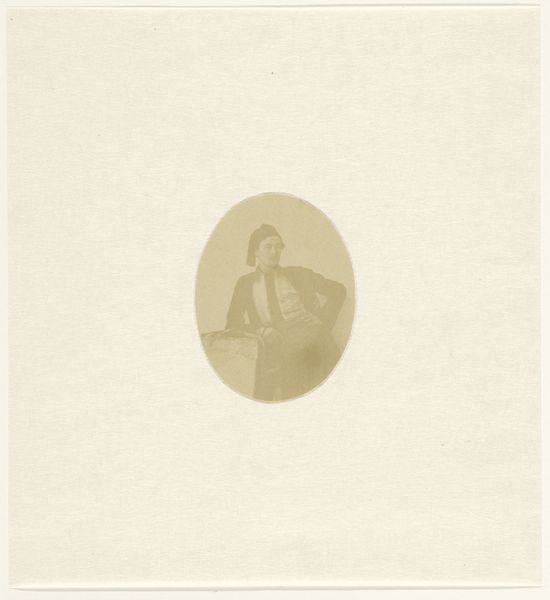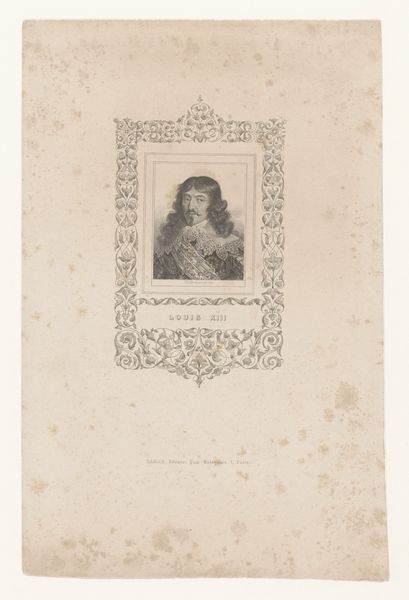
Dimensions: height 100 mm, width 100 mm
Copyright: Rijks Museum: Open Domain
Curator: This is a portrait of Flora Tristan, rendered in pencil. The artist, Albert Vogel, likely created it sometime between 1824 and 1886, which encapsulates Tristan's lifetime. Editor: There’s a certain melancholy about it, wouldn't you agree? The subject's gaze is intense, yet seems to carry an undeniable weight. The loose strokes contribute to this feeling. Curator: Indeed. Vogel's handling of light and shadow creates a powerful sense of depth despite the apparent simplicity of the medium. Note the careful construction of the composition, the figure centered almost perfectly within the frame, and how her clothing is almost like drapery. Editor: Thinking of Tristan's life, I see the portrait reflecting her fierce commitment to social justice and women’s rights. Given the period in which it was made, I can't help but feel like it reflects how her own complex social position impacted her. Curator: Yes, there’s that historical tension visible within it. Structurally, it’s intriguing how the relatively unfinished nature of the drawing—the loose sketch lines particularly—contrasts with the firmness and determination suggested in her expression. It almost speaks to an active and unresolved state, fitting perhaps for an individual so driven towards change. Editor: It really resonates with me, seeing this portrait alongside Tristan's writings on social reforms and her experiences as a woman in a patriarchal society. To me, her portrait is an act of political resistance and gender identity, capturing the complexity of a woman struggling for her independence during this era. I can't help but see her life embedded in this image, from her radical journey from Peru to her tireless writing, fighting against oppression to try to create social change in Paris. It's more than just ink and paper! Curator: Perhaps so, yet it is Vogel's deft rendering of form and expression, through deceptively simple means, that communicates so much. Editor: Ultimately, this image reminds us of Flora Tristan's lasting influence on feminist theory and socialism, demonstrating her resilience as a voice for marginalized people and communities. Curator: For me, it serves as a visual echo of that past.
Comments
No comments
Be the first to comment and join the conversation on the ultimate creative platform.
